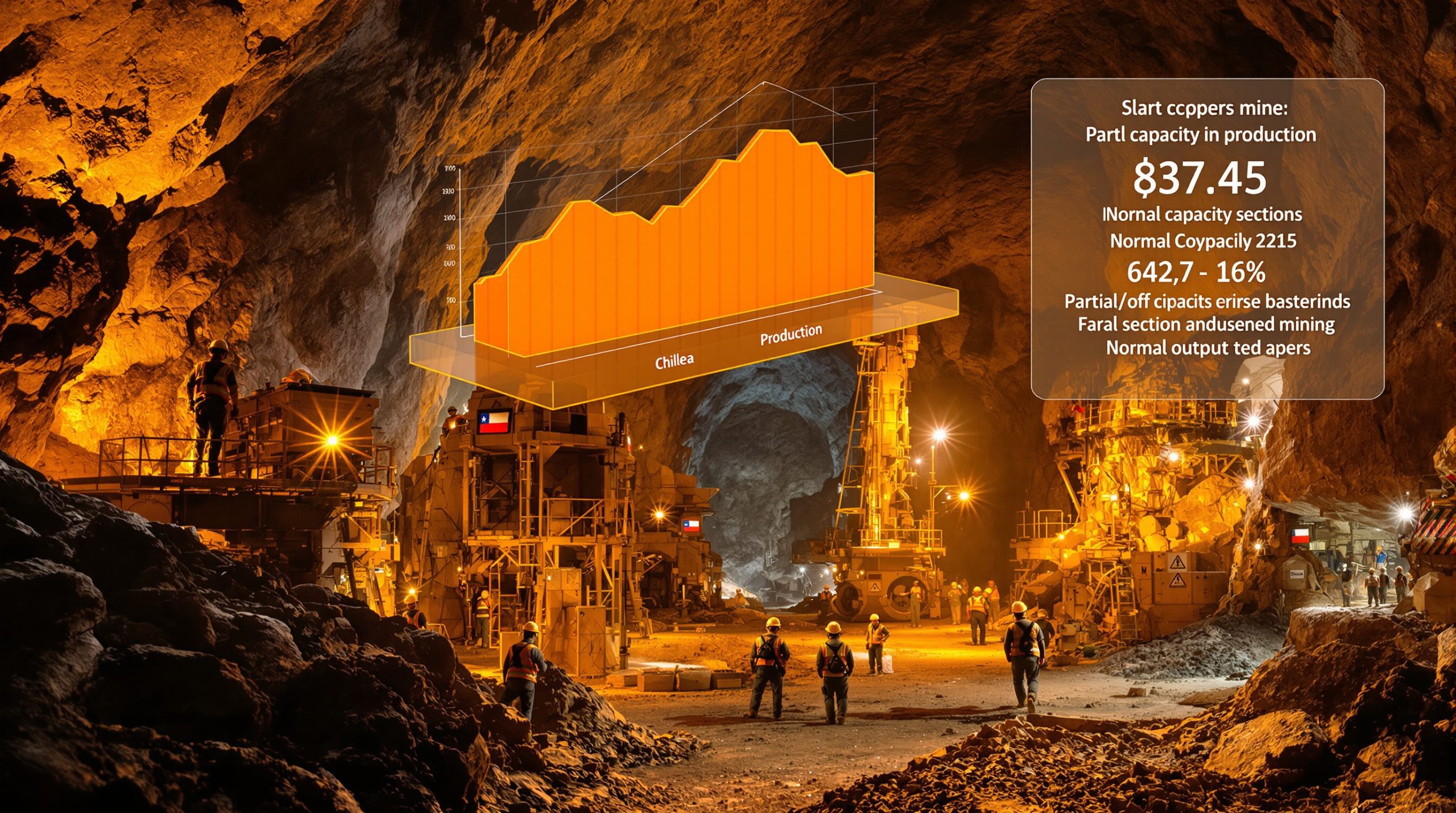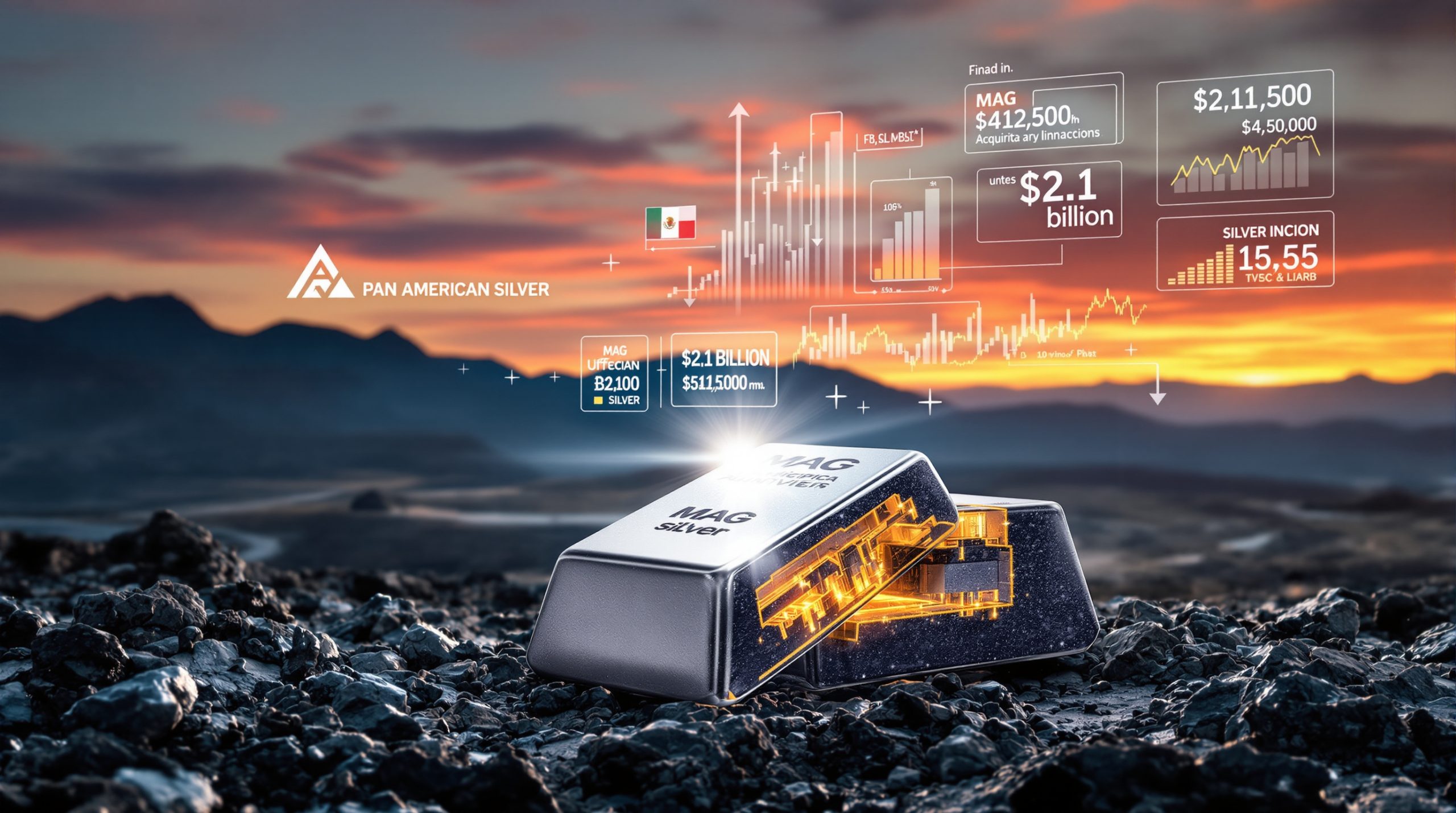The Stibnite Gold Project: Revitalizing Idaho's Mining Legacy
Deep in the mountains of central Idaho lies a mining site with a storied past and promising future. The Stibnite Gold Project represents more than just another mining venture—it embodies a pioneering approach that balances resource extraction with environmental restoration, economic development with ecological responsibility.
Project Location and Significance
Located approximately 44 miles northeast of Cascade, Idaho, the Stibnite site sits within the boundaries of Valley County in the Payette National Forest. This remote location has been a mining district since the early 1900s, with operations intensifying during World War II when the site produced critical antimony and tungsten for the American war effort.
Today's project stands at the intersection of history and innovation. The 13,500-acre project area contains some of the highest-grade gold deposits remaining in the United States, with mineral concentrations that make it economically viable despite rigorous modern environmental standards.
Dual Purpose: Extraction and Restoration
What truly distinguishes the Stibnite Gold Project is its commitment to a dual mission rarely seen in the mining industry. Perpetua Resources Corp (formerly Midas Gold) has designed the project with two parallel objectives:
- Extracting valuable minerals essential to American industry and national security
- Implementing comprehensive innovative mine reclamation of an area damaged by historical mining practices
This approach represents a paradigm shift in the mining sector, where environmental remediation typically occurs only after mining operations conclude. At Stibnite, restoration activities will begin concurrently with mining operations, addressing legacy problems that have persisted for decades.
How Rich Are the Stibnite Mineral Reserves?
The economic viability of any mining project hinges on the quantity and quality of its mineral reserves. The Stibnite Gold Project boasts impressive resource estimates that have attracted significant investment and attention.
Gold and Silver Resources
Independent assessments of the Stibnite site reveal substantial precious metal deposits:
- Proven and probable gold reserves: 4.8 million ounces
- Annual production projection: Approximately 450,000 ounces during peak production years
- Average grade: 1.43-1.6 grams per ton, placing it among the highest-grade open-pit gold deposits in the United States
- Mine life: 12-15 years of active operations
- Silver reserves: 6.7 million ounces as a valuable by-product
These figures position Stibnite as a nationally significant gold resource at a time when gold production insights show domestic production has declined and reliance on imports has increased.
Strategic Antimony Deposits
While gold garners most public attention, the site's antimony reserves may represent an even more strategically crucial asset:
- Antimony reserves: 148-150 million pounds
- Annual production: Expected to supply approximately 35% of U.S. antimony needs
- Strategic significance: The only substantial antimony resource currently identified within U.S. borders
- Import reduction: Potential to significantly decrease American reliance on Chinese and Russian antimony imports
"The Stibnite Gold Project contains the largest known antimony resource in the nation. This puts us in a position to help America reduce its reliance on foreign suppliers for this critical mineral," notes Perpetua Resources in their regulatory filings.
Current U.S. antimony supplies are sourced almost entirely from China (approximately 63%) and Russia (approximately 21%), creating significant supply chain vulnerabilities for critical national applications.
Why is Antimony Strategically Important?
Antimony rarely makes headlines, yet this relatively obscure mineral has become increasingly vital to both national security and the green energy transition.
Critical Mineral Status
In 2018, the U.S. Department of the Interior officially designated antimony as a "critical mineral"—a classification reserved for materials that:
- Are essential to economic or national security
- Have supply chains vulnerable to disruption
- Serve functions for which there are no easy substitutes
This designation was reinforced in 2022 when the USGS updated its critical minerals list, maintaining antimony's status due to increasing concerns about supply chain security.
Applications and National Security
Antimony's unique properties make it irreplaceable in several crucial applications:
Military and Defense Applications:
- Hardening agent in lead ammunition and armor-piercing bullets
- Key component in night vision devices
- Used in infrared detection systems
- Essential for the production of certain explosives
- Component in submarine and naval vessel batteries
Technology Sector:
- Critical in semiconductor manufacturing
- Used in diodes, infrared detectors, and specialized electronic devices
- Component in certain fiber optic systems
- Utilized in flame-proofing compounds for electronics
Energy Storage and Renewables:
- Emerging application in liquid metal batteries for grid-scale energy storage
- Essential component in certain solar panel technologies
- Used in high-performance bearings for wind turbines
- Critical for certain types of hydrogen fuel cells
Consumer and Industrial Uses:
- Flame retardants for furniture, textiles, and plastics
- Catalyst in PET plastic production
- Glass clarifying agent
- Pigments for ceramics and enamels
- Medical equipment including certain X-ray devices
The diverse applications underscore why secure domestic supply has become a priority for policymakers concerned with strategic vulnerability. In fact, Perpetua Resources recently secured a strategic antimony loan to advance the project, highlighting its national importance.
What Environmental Benefits Will the Project Deliver?
The Stibnite area bears the scars of nearly a century of mining conducted before modern environmental regulations. Today's project presents an opportunity to address these historical impacts while developing resources using contemporary standards.
Restoration of Legacy Mining Impacts
Historical mining at Stibnite left significant environmental damage that continues to affect the ecosystem:
Current Environmental Challenges:
- Abandoned mine pits filled with contaminated water
- Over 10.5 million tons of uncontained legacy tailings and waste rock
- Diverted and degraded streams affecting fish migration
- Sedimentation issues affecting water quality
- Blocked fish passage preventing migration of Chinook salmon
Planned Restoration Activities:
- Removal and proper containment of historical tailings and waste
- Restoration of the East Fork of the South Fork of the Salmon River to its original channel
- Reconstruction of stream and wetland habitats
- Reestablishment of fish migration routes
- Revegetation of historically disturbed areas with native plants
- Comprehensive site cleanup removing contaminated materials
"One of the most important aspects of this project is that we can use mining to repair the damage of the past. This site has needed cleanup for decades, but no one has stepped forward with a comprehensive solution until now," explains an environmental engineer involved with the project assessment.
Modern Mining Practices
Unlike historical operations that lacked environmental safeguards, the new project incorporates advanced mining innovation trends to minimize its ecological footprint:
- Tailings management: Lined and monitored tailings storage facility with downstream construction methods
- Water treatment: On-site water treatment facilities to ensure discharge meets or exceeds water quality standards
- Reclamation bonding: Financial assurance in place before operations begin to guarantee completion of restoration
- Monitoring systems: Comprehensive monitoring of groundwater, surface water, air quality, and wildlife
- Progressive reclamation: Ongoing restoration throughout the mine's operational life rather than only at closure
These practices reflect the evolution of mining technology and environmental standards since the site's historical operations.
What Economic Impact Will Stibnite Have on Idaho?
The economic dimensions of the Stibnite Gold Project extend far beyond the value of the minerals extracted, potentially revitalizing a rural region that has experienced economic challenges.
Job Creation and Economic Stimulus
Independent economic impact studies project significant benefits for Idaho's economy:
Employment Projections:
- Construction phase: 500-700 direct jobs over 2-3 years
- Operational phase: Approximately 550 direct, family-wage jobs
- Indirect employment: An estimated 1,000+ additional jobs in supporting industries
- Total economic impact: Projected $1.8-2.4 billion contribution to Idaho's GDP over the project lifetime
Financial Benefits to Region:
- Annual payroll: Approximately $55 million during operations
- Tax revenue: Estimated $506 million in federal, state, and local taxes
- Investment: Over $1 billion in capital expenditure
- Local spending: Approximately $328 million in goods and services purchased in Idaho
These economic benefits would be particularly meaningful in Valley County, which has experienced economic volatility due to its reliance on seasonal tourism and recreation.
Skills Development and Training
Beyond direct employment figures, the project presents opportunities for workforce development in a region with limited industrial training options:
- Partnerships with Idaho colleges for specialized training programs
- Apprenticeship opportunities in mechanical, electrical, and environmental fields
- Development of transferable skills in automation, environmental monitoring, and industrial systems
- Support for STEM education in local schools to prepare the future workforce
Many of these skills would remain valuable in the region long after mining operations conclude, creating lasting economic resilience.
What is the Project Timeline and Current Status?
The path from concept to operation for a modern mining project involves extensive regulatory review, stakeholder engagement, and technical planning.
Regulatory Approval Process
The Stibnite Gold Project has undergone one of the most thorough environmental reviews in Idaho's mining history:
- Initial proposal: First submitted to regulatory authorities in 2016
- Environmental Impact Statement (EIS) process: Eight years of study, analysis, and public comment
- Federal approval: Record of Decision issued by the U.S. Forest Service in January 2025
- Regulatory oversight: Coordinated review by 15+ state and federal agencies
- Public engagement: Over 40,000 public comments collected and addressed
The review process incorporated scientific studies examining everything from water quality and fisheries to cultural resources and socioeconomic impacts, resulting in a 5,000+ page Final Environmental Impact Statement.
Next Steps Toward Construction
With the major regulatory milestone achieved, several critical steps remain before construction can begin:
- Securing approximately 50 additional state and federal permits
- Finalizing project financing (estimated $1.2-1.3 billion capital requirement)
- Completing detailed engineering designs
- Establishing environmental monitoring baselines
- Developing contractor and vendor relationships
- Building access infrastructure improvements
If remaining approvals proceed as anticipated, construction could begin by mid-2026, with initial production potentially starting in 2028-2029.
How Does Stibnite Compare to Other Gold Projects?
Contextualizing the Stibnite Gold Project within the broader mining industry provides perspective on its relative significance and unique characteristics.
Production Scale
When measured against other North American gold operations:
| Project | Annual Gold Production | Grade (g/t) | Operational Timeline |
|---|---|---|---|
| Stibnite (Idaho) | ~450,000 oz (peak) | 1.43-1.6 | Planned 2028-2043 |
| Carlin Complex (Nevada) | ~900,000 oz | 1.0-1.2 | Operating |
| Cortez (Nevada) | ~350,000 oz | 1.2-1.8 | Operating |
| Canadian Malartic (Quebec) | ~600,000 oz | 0.9-1.1 | Operating |
| Donlin (Alaska) | ~1,100,000 oz (planned) | 2.1 | In permitting |
This comparison reveals Stibnite as a significant mid-tier producer with above-average grades for an open-pit operation in North America. The economics are further enhanced by record high gold prices that improve project viability.
Environmental Approach
The project's environmental restoration component truly distinguishes it from conventional mining operations:
- Most modern mines aim to minimize new environmental impacts
- Few incorporate significant remediation of pre-existing conditions
- Even fewer integrate restoration activities throughout the operational phase
- Almost none propose to leave a site in better condition than pre-project status
Mining industry analysts have noted that this approach could represent an emerging model for redeveloping brownfield sites with remaining mineral potential but significant legacy environmental challenges.
What Challenges Has the Project Faced?
The path to approval for the Stibnite Gold Project has not been without significant hurdles, reflecting the complex balancing of interests involved in modern resource development.
Regulatory and Permitting Process
The eight-year review process highlights the intensive scrutiny applied to contemporary mining proposals:
- Scope changes: Multiple revisions to the mine plan to address concerns
- Additional studies: Supplemental environmental analyses required beyond initial projections
- Consultation requirements: Extensive tribal consultation and cultural resource assessments
- Administrative delays: Changes in agency leadership and priorities affecting timelines
- Technical complexities: Detailed water management and fisheries protection planning
These regulatory challenges have resulted in a more robust project design but have also extended timelines and increased development costs significantly.
Balancing Competing Interests
The project has navigated a complex landscape of stakeholder perspectives:
- Environmental organizations: Some support the cleanup aspects while opposing new mining
- Local communities: Generally supportive of economic benefits but concerned about impacts
- Tribal interests: Mixed perspectives based on cultural, environmental, and economic considerations
- Industry observers: Watching the process as a potential precedent for future mining developments
- Government agencies: Balancing resource development with environmental protection mandates
This diversity of perspectives has required extensive engagement, design modifications, and mitigation strategies to address valid concerns while maintaining project viability.
How Will the Project Address Water Quality Concerns?
Water quality represents one of the most critical environmental considerations for any mining operation, particularly in a watershed supporting salmon and other sensitive species.
Water Management Strategy
The project incorporates a comprehensive approach to water protection:
Current Water Quality Challenges:
- Elevated arsenic and antimony levels from historical mining activities
- Sedimentation issues affecting downstream water clarity
- Altered hydrological conditions from previous mining disturbance
- Uncontrolled runoff from legacy waste rock and tailings
Planned Water Protection Measures:
- Capture and treatment of all contact water before release
- Groundwater capture systems to prevent migration of contaminants
- Real-time monitoring systems with automatic alerts for any changes
- Stormwater management designed for extreme precipitation events
- Water treatment technologies exceeding regulatory requirements
- Reduction of existing contamination sources during early project phases
These systems are designed not only to prevent new impacts but to improve existing conditions by addressing historical sources of contamination.
Fish Habitat Restoration
A centerpiece of the environmental restoration involves reestablishing fish passage and improving aquatic habitat:
- Current barrier: The East Fork of the South Fork of the Salmon River currently flows into an abandoned mine pit, blocking fish migration
- Planned solution: Restoration of the river to its original channel with enhanced habitat features
- Fish passage: Design of appropriate passage structures allowing migration to historical spawning areas
- Temperature management: Stream designs incorporating temperature considerations for sensitive species
- Monitoring program: Comprehensive tracking of fish populations before, during, and after project implementation
Fisheries biologists anticipate that successful implementation could reestablish salmon populations in streams where they haven't been seen for nearly a century.
What Makes Stibnite Nationally Significant?
Beyond its local importance, the Stibnite Gold Project carries implications for national priorities related to resource security, environmental innovation, and economic development.
Domestic Resource Security
The project addresses multiple elements of national resource strategy:
- Critical mineral supply: Providing domestic antimony reduces vulnerability to supply disruptions
- Precious metal production: Contributing to domestic gold reserves and reducing trade deficits
- Strategic positioning: Demonstrating capacity to develop resources responsibly within U.S. borders
- Economic resilience: Strengthening domestic supply chains for essential materials
- National security: Supporting defense industrial base requirements
The project aligns with bipartisan policy objectives to secure reliable supplies of strategic and critical minerals from domestic sources.
Model for Modern Mining
The Stibnite approach demonstrates an evolving vision for resource development:
- Brownfield redevelopment: Utilizing previously disturbed lands rather than pristine areas
- Restoration integration: Incorporating environmental improvement into the core business model
- Stakeholder engagement: Extensive consultation informing project design and implementation
- Technological innovation: Application of advanced techniques for both extraction and protection
- Full lifecycle planning: Comprehensive consideration from pre-construction through post-closure
Industry observers note that successful implementation could influence future mining projects nationwide, potentially establishing new standards for responsible resource development.
FAQs About the Stibnite Gold Project
When will the Stibnite Gold Project begin construction?
With regulatory approval secured in January 2025, Perpetua Resources is now working through final permitting and financing arrangements. Construction could begin as early as mid-2026, pending completion of these remaining steps.
How long will the mine operate?
Current plans project an operational life of 12-15 years, though this could extend depending on future exploration results an
Looking for the Next Major Mining Investment Opportunity?
Discover significant ASX mineral discoveries before the market with Discovery Alert's proprietary Discovery IQ model, which transforms complex data into actionable investment insights. Understand why projects like Stibnite and other major mineral discoveries can generate substantial returns by visiting the Discovery Alert discoveries page and begin your 30-day free trial today.




